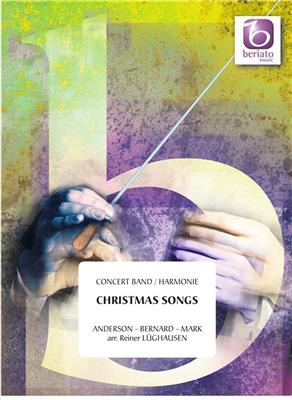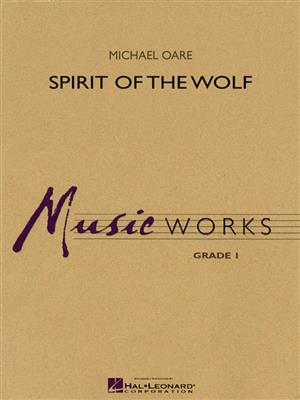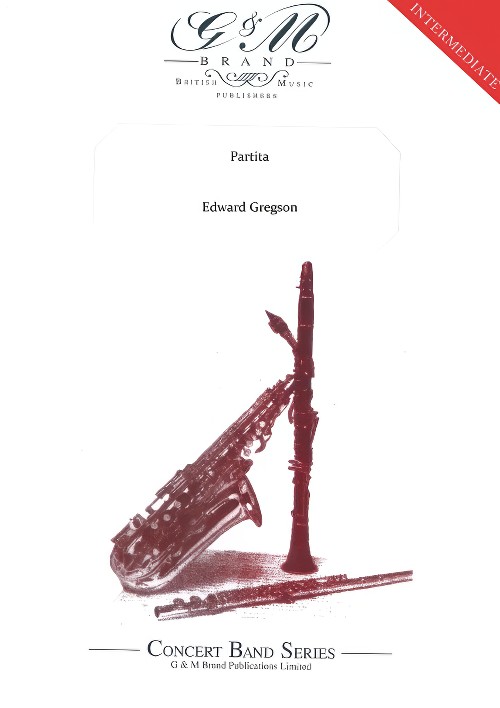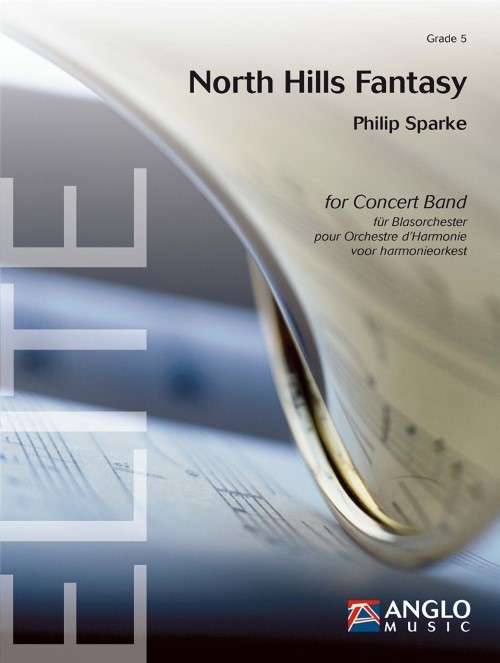Results
-
 £64.99
£64.99Half Moon on the Hudson - Michael Sweeney
Nearly 400 years ago (in 1609) Henry Hudson and his ship, the Half Moon, explored the majestic river that was later to bear his name. Half Moon on the Hudson pays tribute to this area of New York and the spirit of exploration and adventure. A regal fanfare announces the beginning of the work, followed by an energetic and rhythmic section that features various sections of the band answering one another. An emotional and chorale-like middle section provides a calmer mood along with lush harmonizations. The brass and percussion sections herald the final segment, driving to a dramatic conclusion of this rewarding work for winds. Dur: 6:30 (Includes full performance CD)
Estimated dispatch 7-14 working days
-
 £109.99
£109.99Christmas Songs
Christmas Songs consists of the most famous American Christmas songs, including: "Sleigh Ride", "The First Nol", "Winter Wonderland", "Little Town of Bethlehem", "Rudolf, the Red-nosed Reindeer" and naturally "We wish you a Merry Christmas". Get in the mood for Christmas!
Estimated dispatch 7-14 working days
-
 £53.50
£53.50Spirit of the Wolf - Michael Oare
In this evocative work for beginning bands, Michael Oare draws upon imagery and sounds of the Native American "wolf dance" for inspiration. A flute solo sets the opening mood, followed by dramatic full band statements accompanied by a driving percussion ostinato. Dur: 1:45
Estimated dispatch 7-14 working days
-
 £42.50
£42.50Mood Indigo
Introduce your young players to the music of Duke Ellington with this easy arrangement of one of the Duke's classics. Written in a medium slow swing style, this one will make your band sound great and is sure to be a hit with theparents.
Estimated dispatch 7-14 working days
-
 £309.99
£309.99Ninth Symphony (Concert Band - Score and Parts) - Barnes, James
Premiered on 21 September, 2018 in Lawrence, Kansas by The University of Kansas Wind Ensemble (Dr. Paul Popiel, conducting), James Barnes' Ninth Symphony was composed between January and late June of that same year. This large work was commissioned by a consortium of twenty-one college bands, community bands, professional bands and individuals to help mark the 70th birthday of the composer (b. 1949). It is an expansive forty-minute work in four movements, of which the composer writes, "This is my last symphony...this work represents a compendium of all that I have learned during the fifty years of composing and scoring for this wonderful new medium: the modern wind band." The first movement, subtitled Elegy, is based around G minor. It is the longest movement of the symphony. Tragic and despondent in character, it is cast in sonata-allegro form. The second movement is entitled Scherzo. Barnes claims that "I have always wanted to write a waltz," and that is how this movement is cast, in a modified rondo form in D minor. In contrast to the mood of the first movement, the scherzo is a delightful posy of expansive melody, splashy color, humor and rhythm. The third movement, which is in a modified tertiary form, is entitled Night Music. In contrast to the scherzo, this movement begins with a mysterious incantation, first displayed by solo Alto Flute. The music becomes even darker and more mysterious, while overall the movement effectively expresses an "otherworldly" mood, ending with a solo soprano offstage which suddenly emerges, eerily singing a modified version of the opening incantation. Cast in sonata-allegro form, the fourth movement is most definitely a rousing Finale, beginning with a brilliant fanfare and undergoing several mood transformations before emerging into the final coda, ending the symphony with an energetic splash of color. Duration: 40.00
Estimated dispatch 7-14 working days
-
 £309.99
£309.99Symphony No. 9, Op. 160 - James Barnes
Premiered on September 21, 2018 in Lawrence, Kansas by the University of Kansas Wind Ensemble (Dr. Paul Popiel, conducting), James Barnes' Ninth Symphony was composed between January and late June of that same year. This large work was commissioned by a consortium of twenty-one college bands, community bands, professional bands and individuals to help mark the 70th birthday of the composer (b. 1949). It is an expansive forty-minute work in four movements, of which the composer writes, This is my last symphony... this work represents a compendium of all that I have learned during the fifty years of composing and scoring for this wonderful new medium: the modern wind band. The first movement, subtitled Elegy, is based around G minor. It is the longest movement of the symphony. Tragic and despondent in character, it is cast in sonata-allegro form. The second movement is entitled Scherzo. Barnes claims that I have always wanted to write a waltz, and that is how this movement is cast, in a modified rondo form in D minor. In contrast to the mood of the first movement, the scherzo is a delightful posy of expansive melody, splashy color, humor and rhythm. The third movement, which is in a modified tertiary form, is entitled Night Music. In contrast to the scherzo, this movement begins with a mysterious incantation, first displayed by solo Alto flute. The music becomes even darker and more mysterious, while overall the movement effectively expresses an otherworldly mood, ending with a solo soprano offstage which suddenly emerges, eerily singing a modified version of the opening incantation. Cast in sonata-allegro form, the fourth movement is most definitely a rousing Finale, beginning with a brilliant fanfare and undergoing several mood transformations before emerging into the final coda, ending the symphony with an energetic splash of color.
Estimated dispatch 7-14 working days
-
 £78.20
£78.20Caribbean Summer - Luigi di Ghisallo
Most people who live in the Caribbean are of an outspokenly straightforward nature, and always in good mood. "Caribbean Summer", a three-movement piece, captures this very mood: Very early in the morning, a summer day begins with "Guadeloupe", a Caribbean waltz. In this the change from a triple meter to a duple meter counter rhythm is of prime importance. From it, the music draws a particular lilt.At noon there is a happy and lively hustle and bustle on the beach. Vendors ("The Coconut Vendor") sing and offer their sugar-peanuts ("Chou-Cou"). A guest spontaneously begins to drum his fingers on a table, a second one reaches for a calabash or a cowbell - a cha-cha-cha is born. Finally, in "Caribbean Nights" a joyful parade of happy people march down the streets. Based on this very feeling, a special dance developed chiefly in the Dominican Republic: a simple basic two-step pattern in even rhythm becomes a "Merengue" together with the right, so to speak contra rotating motion of the hips! This cheerful dance then marks the close of day in a happy way - and in the morning everything will begin over again...
Estimated dispatch 7-14 working days
-
 £84.95
£84.95Partita (Concert Band - Score and Parts) - Gregson, Edward
Partita' was originally composed for brass band in 1973. The work is in three movements, and uses material based on the 13th century plainsong 'Dies Irae". the opening Intrada is sombre. the second movement is a 'chorale and variations. the chorale melody follows the main outline of the plainsong. the five variations are varied in mood and intensity. the final March is much happier in mood and has a lyrical tune in the middle first heard on horns. However, references to the 'Dies Irae' are still apparent and the final bars of the work contain a quote from the opening movement.
Estimated dispatch 7-14 working days
-
 £16.95
£16.95Partita (Concert Band - Score Only) - Gregson, Edward
Partita' was originally composed for brass band in 1973. The work is in three movements, and uses material based on the 13th century plainsong 'Dies Irae". the opening Intrada is sombre. the second movement is a 'chorale and variations. the chorale melody follows the main outline of the plainsong. the five variations are varied in mood and intensity. the final March is much happier in mood and has a lyrical tune in the middle first heard on horns. However, references to the 'Dies Irae' are still apparent and the final bars of the work contain a quote from the opening movement.
Estimated dispatch 7-14 working days
-
 £118.99
£118.99North Hills Fantasy (Concert Band - Score and Parts) - Sparke, Philip
North Hills Fantasy was commissioned by the North Hills High School Bands, Pittsburgh, Pennsylvania (director: Len Lavelle) as part of a commissioning programme that has run since 1965 - the longest of its kind in the USA. The work opens with a reflective, unaccompanied solo for alto saxophone which develops into a chorale for horns and saxes. This is taken up by the trumpets and subsides to a change of key and mood, with highly decorated folk-like solos for clarinet, bassoon and saxes. These solos build to a climax for full band, which heralds a triumphant return of the horn chorale, accompanied by florid woodwind figuration. But the mood soon winds down; fragments of earlier melodies return calmly to peacefully close the work. Duration: 5.30
Estimated dispatch 7-14 working days
